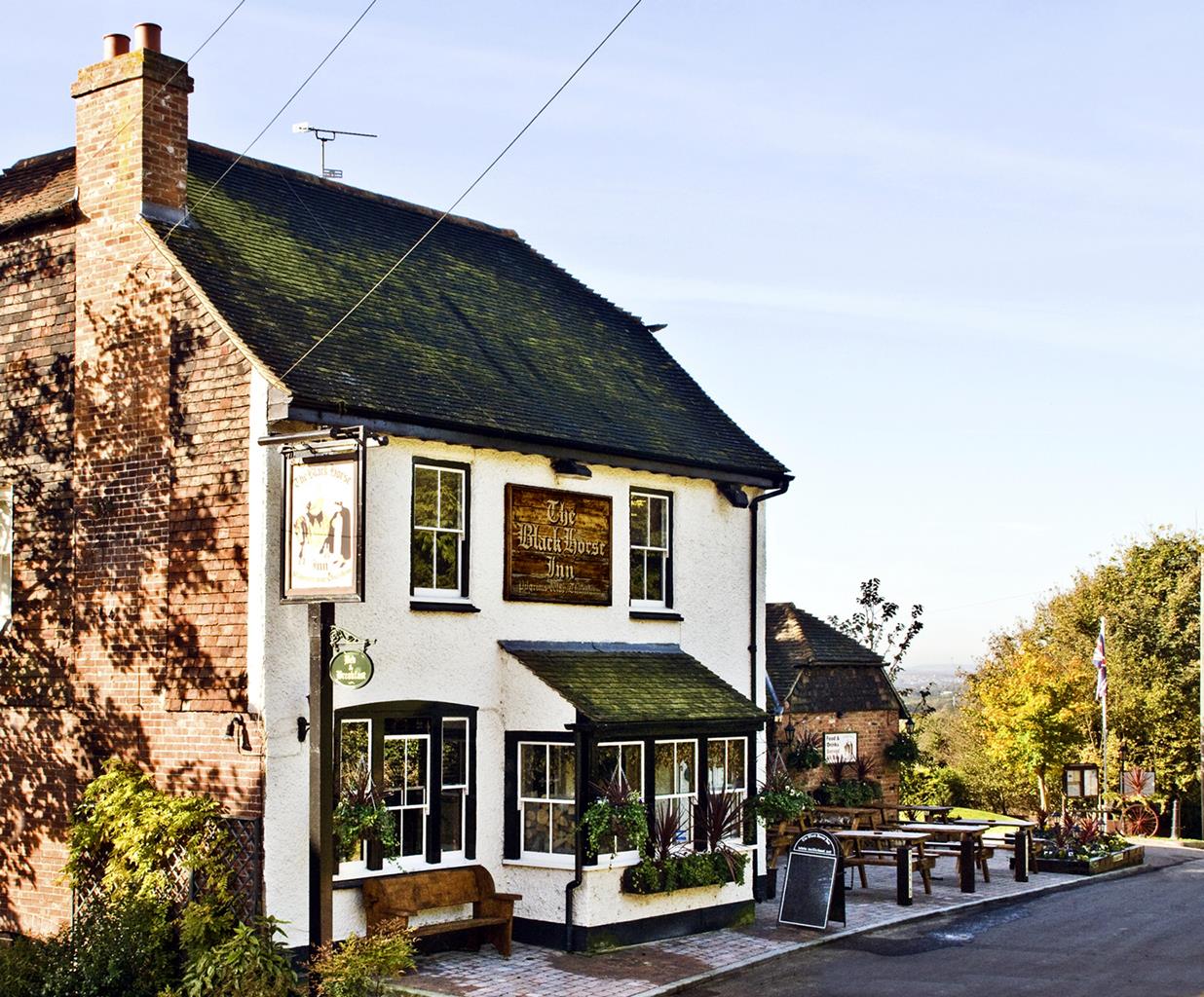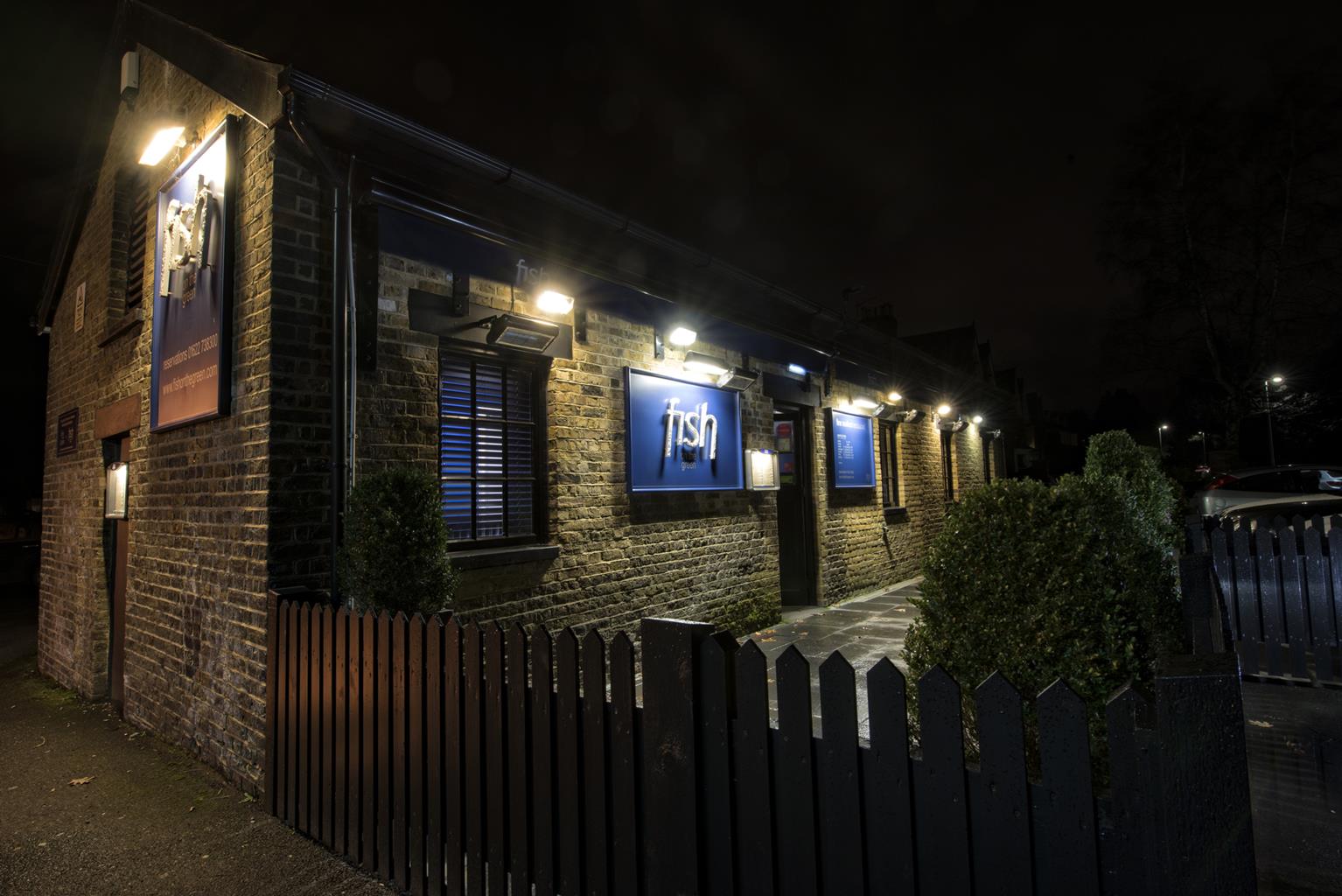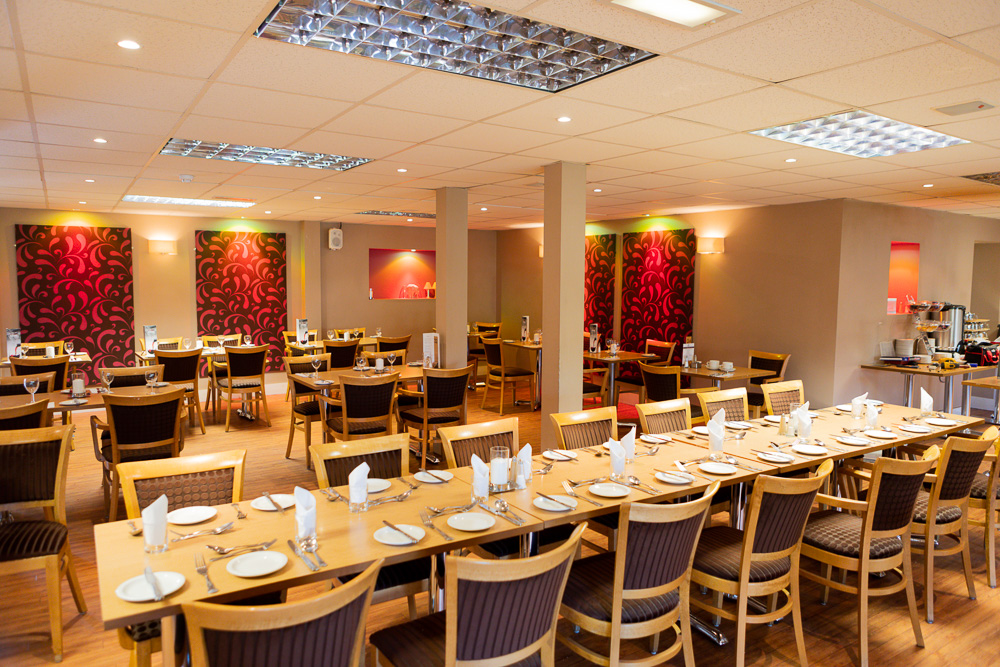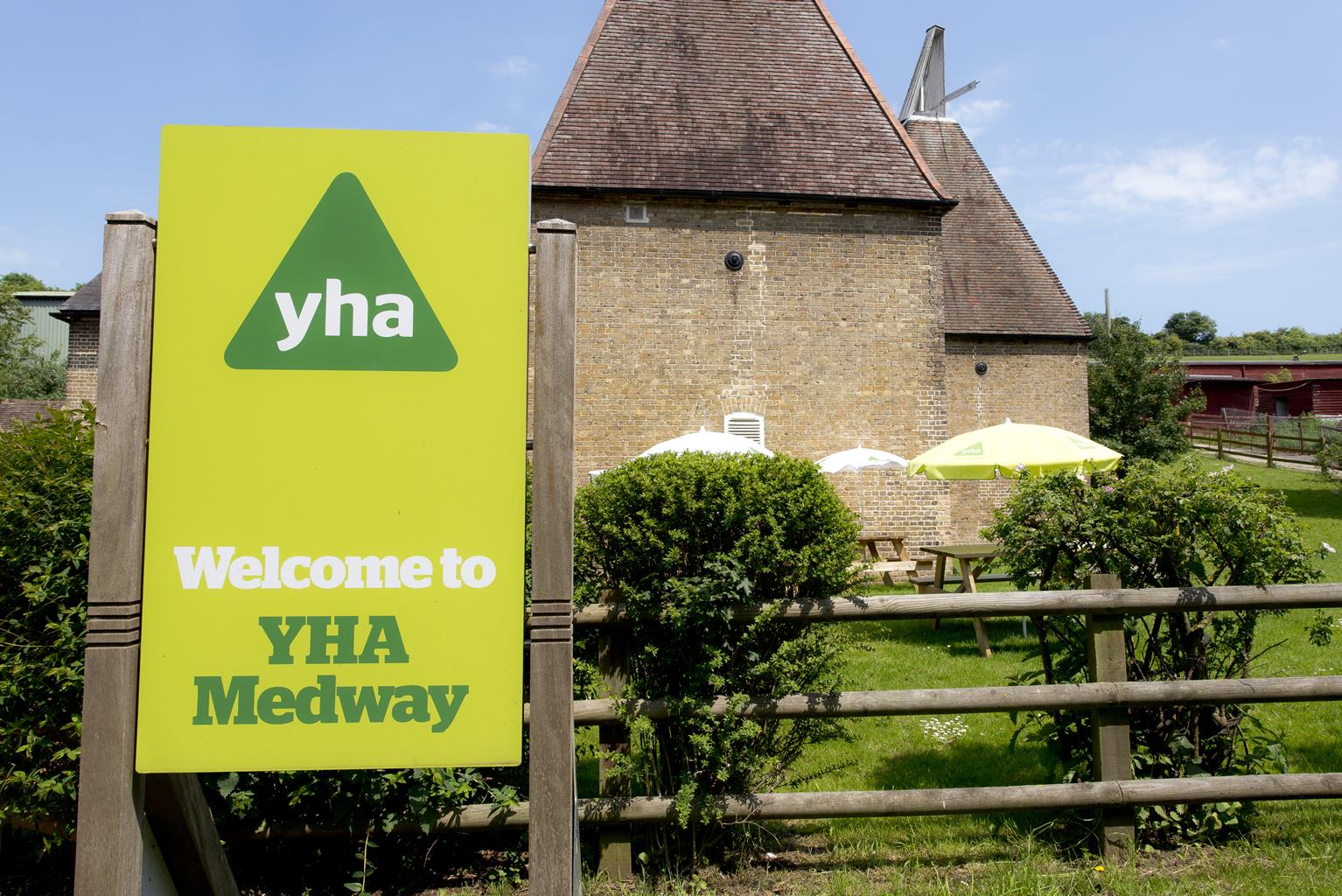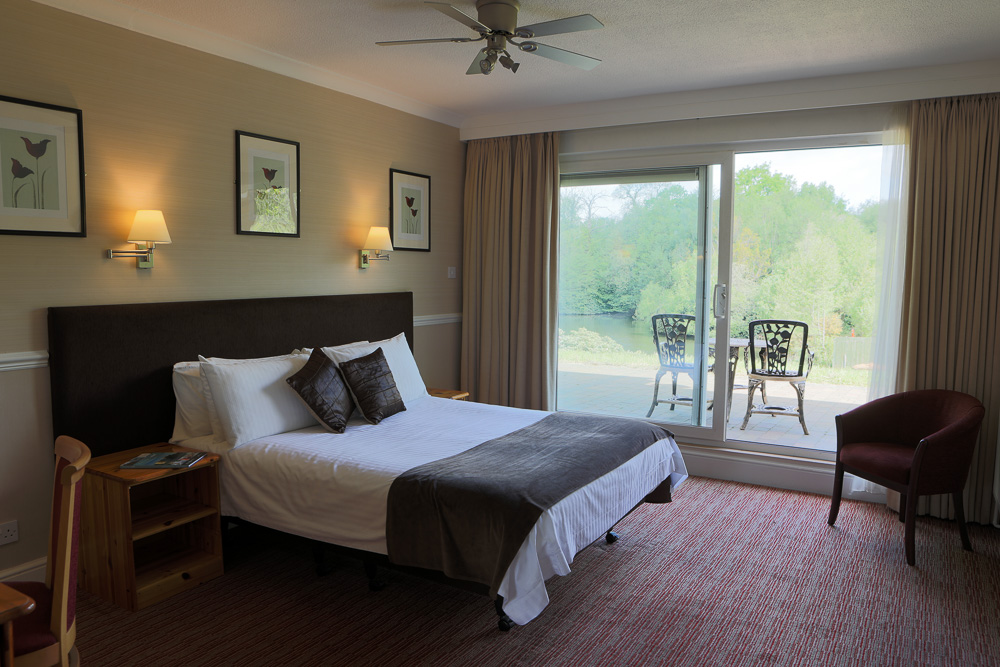Originally built as a servicemen’s club for the NAAFI in the 1940s, the King Charles Hotel is…
A walk from Rochester to Upnor

6 miles (9.7kms)
About the walk
In Our Mutual Friend (1865), Charles Dickens wrote of 'a ship's hull, with its rusty iron links of cable run out of hawse-holes long discoloured with the iron's rusty tears'. You pass a decaying ship just like this as you walk along the Medway from Rochester to Upnor, and the spirit of Charles Dickens (1812–70) is with you throughout this walk. In the streets of Rochester you'll half expect to meet genial Mr Pickwick coming out of a pub, or see mad Miss Havisham peering from a window still wearing her ancient wedding dress.
Charles Dickens came to live near Rochester in 1816 as a 'queer small boy' of five, and the area held a fascination for him throughout his life, inspiring much of his work. Wherever you go you pass places that featured in his novels. There's Eastgate House, which appears as Westgate House in The Pickwick Papers (1836–37); Rochester Cathedral, the focal point of his last, unfinished novel, The Mystery of Edwin Drood (1870); and Restoration House, which became Satis House in Great Expectations (1861), the mysterious home of Miss Havisham. Travel a few miles from Rochester to Cooling churchyard and you can see the tiny 'stone lozenges', the children's gravestones that feature in the opening passage of Great Expectations.
Dickens' life in Rochester was happy, although he was a delicate child and never enjoyed good health. However, when his family moved to London a few years later, his life changed. His father John, who always lived above his means, fell deeply into debt and was sent to the Marshalsea Debtor's Prison. Young Charles had to work in a blacking factory to help support the family, an experience that shamed him and haunted him throughout his life. He went to work at an attorney's office at the age of 15, but was so keen to write that he taught himself shorthand and eventually found work as a journalist. In 1836 his first novel, The Pickwick Papers, was published.
His books made him wealthy and in 1856 Dickens bought Gad's Hill Place near Rochester, a house he had dreamed of owning since he was a child. Here he would write, entertain fellow authors like Hans Christian Andersen and Wilkie Collins, and go for long walks beside the desolate Medway marshes, just as he used to do with his father. He loved to work in an ornate Swiss chalet, which he built in his garden. It had been sent to him as a gift by a friend and arrived, IKEA style, flat-packed in boxes – you can imagine the fun he must have had assembling it. The chalet has now been moved and is in the centre of Rochester, by Eastgate House. Dickens died at Gad's Hill in 1870.
Walk directions
From Blue Boar Lane car park go left into the pedestrianised part of the High Street. Turn right up Crow Lane, then right by Restoration House into The Vines, a small park. Bear right halfway across the park, then turn right and walk down the hill to the cathedral.
From the west door of the cathedral, cross the road, turn left and walk round the castle. Pass Satis House, then turn right and walk by the River Medway until you reach Rochester Bridge. Cross the bridge and, at the traffic lights, go right along Canal Road, which runs under the railway bridge.
Walk along the river, pass The Riverside Tavern and, in the River Medway, the rusting hull of a ship that could have come from the pages of a Dickens novel. Follow the footpath sign. This brings you out to a new estate where you bear right along a footpath/cycle track, which is part of the Saxon Shore Way. Keep walking in the same direction along this track, which is intersected by roads at several points.
At a bend in the road the Saxon Shore Way bears right, crosses industrial land and the busy A289, and then finally takes you close to the riverbank again. At the river continue walking ahead (it can get very muddy) as far as the entrance to Upnor Castle.
Turn left along Upnor's tiny, and extremely quaint, High Street, and then go to the right. Where a road joins from the left, keep walking ahead to join the footpath that runs to the right of the main road. Follow this to Lower Upnor, where you turn right to reach the quay and enjoy great views of the Medway. For even better views, take a short detour up the hill to your left. Prehistoric wild animals once roamed these slopes, as archaeological evidence shows. One of the most interesting discoveries in the area was made in 1911, when a group of Royal Engineers working near Upnor dug up the remains of a mammoth dating back to the last ice age. It was taken to the Natural History Museum in London.
Retrace your steps back into Rochester. After crossing Rochester Bridge walk along the High Street, passing sights such as The Six Poor Travellers' Inn and Eastgate House, which is located beside the Blue Boar Lane car park.
Additional information
City streets and footpaths/cycleways
Historic townscapes and some rundown riverside sections
Too busy for most dogs
OS Explorer 163 Gravesend & Rochester
Blue Boar Lane car park (fee)
At tourist information centre, also at Northgate
WALKING IN SAFETY
Read our tips to look after yourself and the environment when following this walk.
Find out more
Also in the area
About the area
Discover Kent
The White Cliffs of Dover are an English icon – the epitome of our island heritage and sense of nationhood. They also mark the point where the Kent Downs AONB, that great arc of chalk downland stretching from the Surrey Hills and sometimes known as ‘the Garden of England’, finally reaches the sea. This is a well-ordered and settled landscape, where chalk and greensand escarpments look down into the wooded Weald to the south.
Many historic parklands, including Knole Park and Sir Winston Churchill’s red-brick former home at Chartwell, are also worth visiting. Attractive settlements such as Charing, site of Archbishop Cranmer’s Tudor palace, and Chilham, with its magnificent half-timbered buildings and 17th-century castle built on a Norman site, can be found on the Pilgrim’s Way, the traditional route for Canterbury-bound pilgrims in the Middle Ages.
In the nature reserves, such as the traditionally coppiced woodlands of Denge Wood and Earley Wood, and the ancient fine chalk woodland of Yockletts Bank high on the North Downs near Ashford, it is still possible to experience the atmosphere of wilderness that must have been felt by the earliest travellers along this ancient ridgeway.
Nearby stays
Restaurants and Pubs
Nearby experiences
Recommended things to do
Why choose Rated Trips?
Your trusted guide to rated places across the UK
The best coverage
Discover more than 15,000 professionally rated places to stay, eat and visit from across the UK and Ireland.
Quality assured
Choose a place to stay safe in the knowledge that it has been expertly assessed by trained assessors.
Plan your next trip
Search by location or the type of place you're visiting to find your next ideal holiday experience.
Travel inspiration
Read our articles, city guides and recommended things to do for inspiration. We're here to help you explore the UK.







